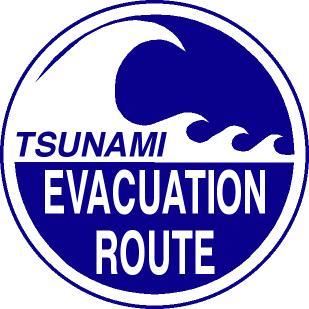
We've arrived at the last week of our campaign, and we'll spend it talking about tsunamis and tsunami evacuation. FEMA has a number of good resources to help you determine how to prepare before and stay safe during a tsunami, but our focus this week will be on getting citizens acquainted with tsunami risk specific to Clatsop County.
What is the Cascadia Subduction Zone (CSZ)?
If you're unfamiliar with the potential source for tsunami in Clatsop County, start this week by reading up on the Cascadia Subduction Zone (CSZ). The CSZ is underwater fault line about 80 miles off our coast that produces a major earthquake every 300-500 years (the last CSZ earthquake/tsunami in Clatsop County was in 1700).
When a CSZ earthquake occurs, it sends a tsunami to the local shore in as little as 15 minutes, so it is critical once the shaking stops for anyone in the tsunami inundation zone to move to high ground.
Where is Tsunami Inundation Zone?
The first step in preparing for tsunami evacuation is to consider the locations where you live, work and play. Once you've identified your common places, figure out which of them are in the tsunami inundation zone by using a couple different resources: Access inundation maps online to find locations by community or visit the interactive NANOOS site where you can type in an address to determine a variety of hazards that impact your area. At a glance, green is the high ground you're aiming for, and yellow represents the largest tsunami anticipated on the Oregon Coast...the worst case scenario.
Plan Your Route
Okay, now that you've had time to look, did you find that one of your frequented places is in the inundation zone? If so, use the online maps again, this time to identify the route you would take to safe ground following an earthquake/tsunami.
Pack a Kit
Don't wait until an emergency to practice evacuation. First, pack a kit of the necessary items you would need if you had to leave your home quickly-- also, make sure to have a pair of boots and flashlight next to the bed ready to grab.
Practice, Practice, Practice
Next, practice grabbing your bag and walking along evacuation route(s). Practice with friends, practice at a moment's notice, and practice in the dark. Consider the following:
How long does it take?
What potential obstacles you might encounter along the way?
What might change about the route(s) after an earthquake?
How fast will you need to travel to make it safely to high ground?
How would you manage/plan differently for winter/summer and day/night?
Learn More!
If you'd like to learn more about the tsunami evacuation mapping system(s) in Clatsop County, consider attending "Tsunami Evacuation Routes in Clatsop County" on Wednesday, October 19 , which is a virtual presentation featuring the Department of Geology and Mineral Industries (DOGAMI) to learn more about what maps are available and how to interpret them.




